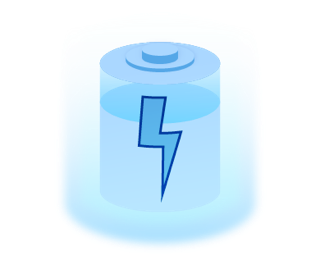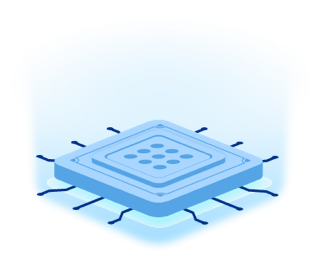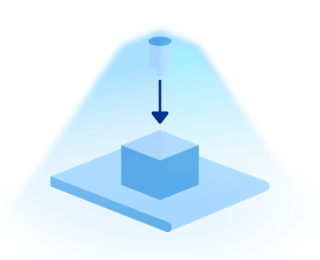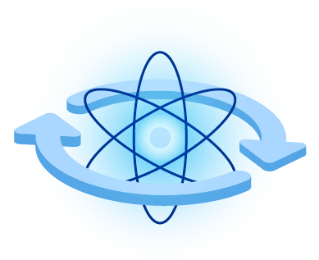Quantum Devices & Electronics (QDE)
RESEARCH FOR REAL-WORLD IMPACT
Today’s hardware platforms for quantum computing, sensing, and communication, often rely on traditional bulk materials or off-the-shelf parts. These are not optimised for quantum behaviours, such as superposition, entanglement, tunneling and quantum interference. As a result, performance is undermined by defects, noise, and decoherence. Scaling beyond basic systems of a few tens to hundreds of quantum hardware primitives – fundamental building blocks such as qubits, detectors/sensors – is severely plagued by inherent noise sources within host materials.
The trade-off of using today’s materials:
Available & Accessible
Current quantum hardware platforms often use mature bulk materials (silicon and its derivatives, diamond, etc.) or off-the-shelf components (lenses, beam-splitters, detectors, etc.) that are technologically practical for quick demonstration and can support ongoing quantum research.
Not Purpose Built
Traditional techniques force-fitting materials and components into quantum platforms may not produce the most efficient construct for harnessing quantum properties, often results in unwanted defects, unplanned cross-talks, and ultimately, decoherence of quantum states.
Developing purpose-built materials could lead to new quantum solutions unconstrained by today’s materials or platforms meant for solving traditional problems. Advancements in this space unlocks vast opportunities for the efficient development, high performance, and large-scale deployment of quantum technologies, that can revolutionise industries.
OUR WORK
To further advance quantum technologies, it is imperative for a fundamental refocus on the materials bedrock for quantum hardware primitives. Instead of forcing mature materials to give us the desired quantum phenomena, we can select and develop materials based on these quantum efficiency considerations:

Energy
Materials able to harness the energy efficiency of quantum processes offer sustainability advantages when applied in devices

Computing
Advanced materials for quantum computing, as bulk materials impair quantum gate fidelities (e.g. charge noise) and limit the ability to solve realistic problems

Production
For real-world applications, quantum hardware primitives need to be reproducible and scalable, and compatible materials are needed to facilitate production

Transduction
Material facilitating efficient quantum state transfer between modalities, such as photonic, electronic, and phononic, to bridge various quantum systems
KEY FOCUSES
- Low-dimensional materials (2D, 1D, or 0D, inherently quantum) for solid-state quantum device primitives, such as qubits, sources, and sensors
- Process technologies for supporting the production of low-dimensional quantum materials, and materials integration for quantum device fabrication
- New device concepts that exploit the quantum advantage of embedded low-dimensional materials, such as tunnelling-FETs, van der Waals materials-based transmon qubits, spin-valley qubits, nanowire quantum detectors/qubits, and topological quantum devices
- New material options that are capable of coherently interfacing diverse degrees of freedom, such as photonic, electronic, and phononic, for efficient quantum state transfer and enhanced performance of hybrid quantum systems
A*STAR celebrates International Women's Day

From groundbreaking discoveries to cutting-edge research, our researchers are empowering the next generation of female science, technology, engineering and mathematics (STEM) leaders.
Get inspired by our #WomeninSTEM
63ef786049124833a1ff4c499fa447ff.png?sfvrsn=66fd30ac_3)